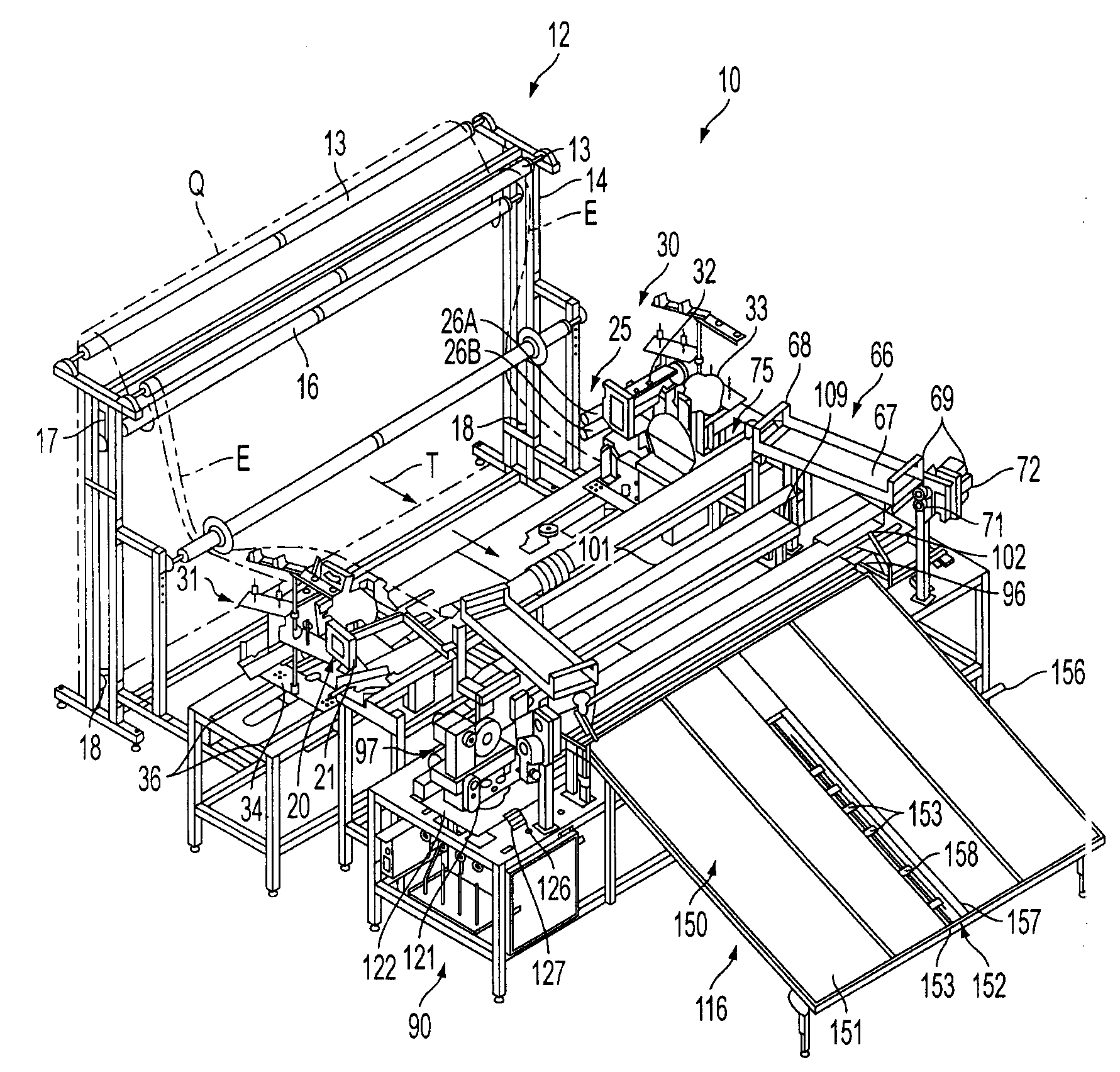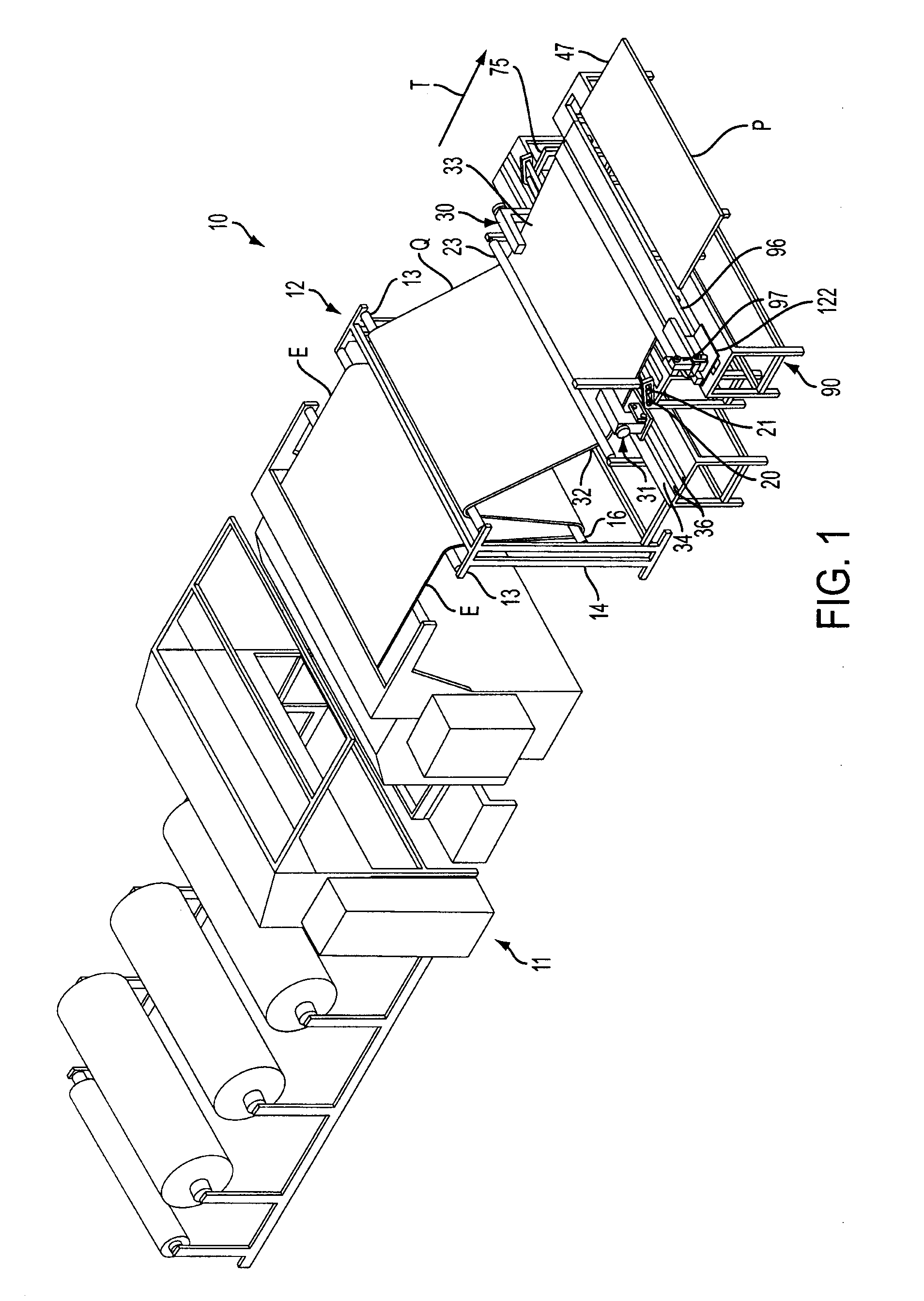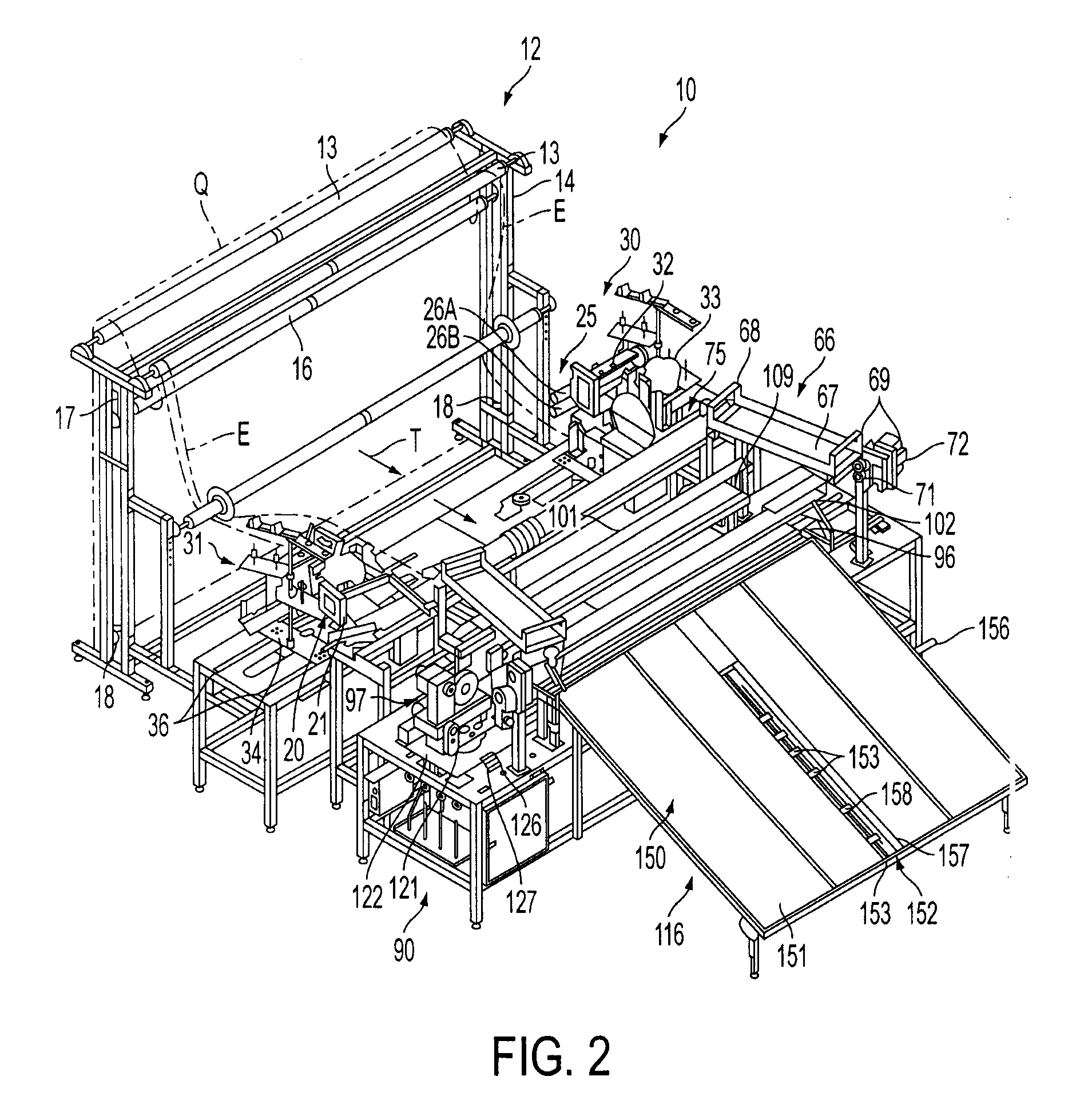Automatic panel cutting and seaming system
a cutting and seaming system technology, applied in the field of sewing systems and methods, can solve the problems of increasing the cost and slow production of such articles, limiting the type and number of sewing operations that can be performed, and requiring a large amount of sewing
- Summary
- Abstract
- Description
- Claims
- Application Information
AI Technical Summary
Benefits of technology
Problems solved by technology
Method used
Image
Examples
Embodiment Construction
[0020]Referring now to the drawings in which like numerals indicate like parts throughout the several views, FIGS. 1-8 illustrate an automatic panel cutting and seaming system or station 10 for cutting and seaming the side and leading and trailing edges of a fabric material, such as quilted material Q shown in FIG. 1, for forming fabric panels, such as a mattress panel P, of desired sizes, such as for use in forming king size, queen size, double, twin, etc., size mattresses, or other similar products. FIGS. 9A and 9B schematically illustrate the operation of alternative embodiments of the automatic panel cutting and seaming system for forming panels of varying desired sizes.
[0021]As generally illustrated in FIG. 1, the quilted material Q can be received from an upstream source, such as a quilting machine 11, such as described and claimed in U.S. patent application Ser. No. 11 / 677,778, the disclosure of which is incorporated herein in its entirety, in which a fabric material is sewn ...
PUM
 Login to View More
Login to View More Abstract
Description
Claims
Application Information
 Login to View More
Login to View More - R&D
- Intellectual Property
- Life Sciences
- Materials
- Tech Scout
- Unparalleled Data Quality
- Higher Quality Content
- 60% Fewer Hallucinations
Browse by: Latest US Patents, China's latest patents, Technical Efficacy Thesaurus, Application Domain, Technology Topic, Popular Technical Reports.
© 2025 PatSnap. All rights reserved.Legal|Privacy policy|Modern Slavery Act Transparency Statement|Sitemap|About US| Contact US: help@patsnap.com



